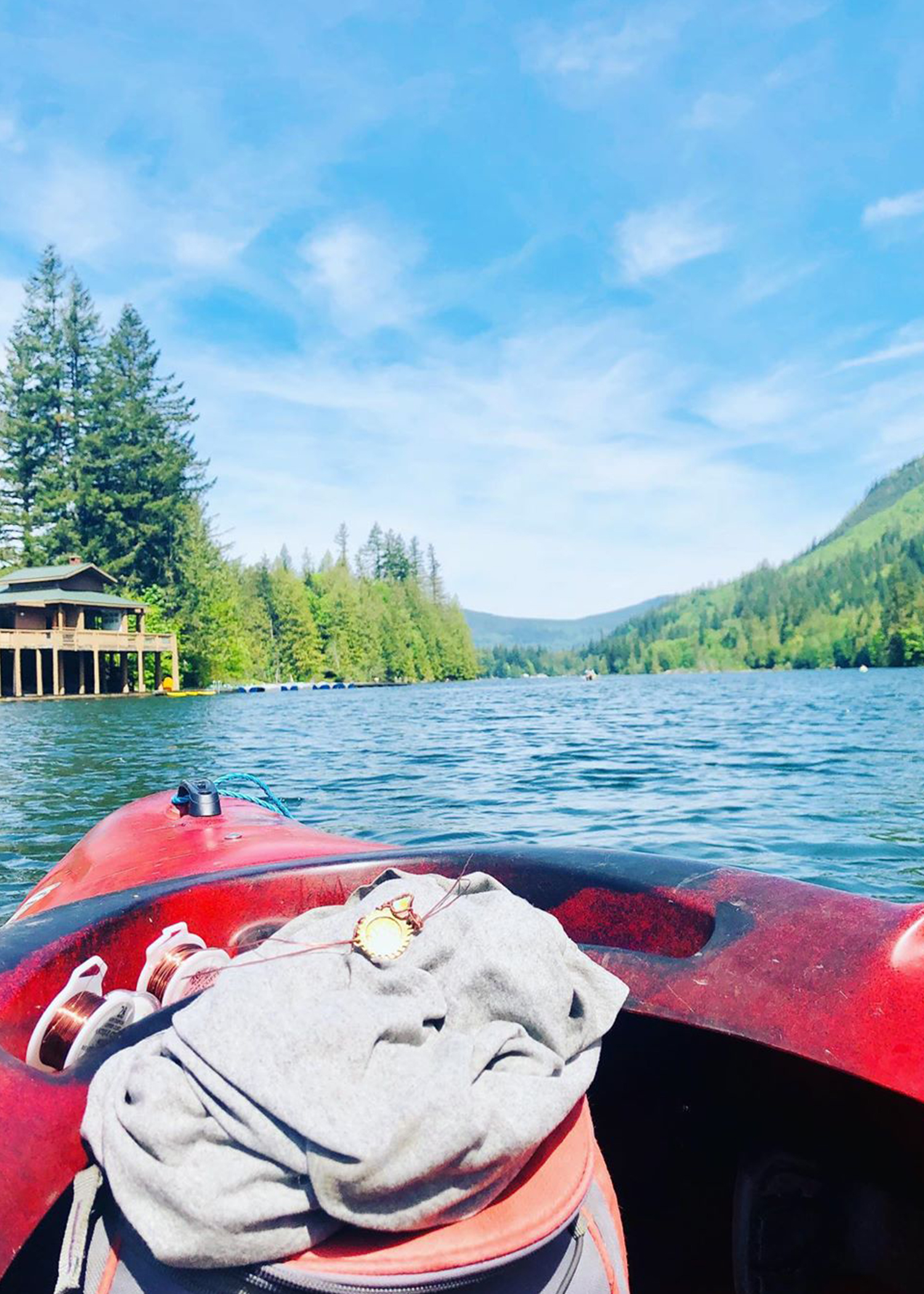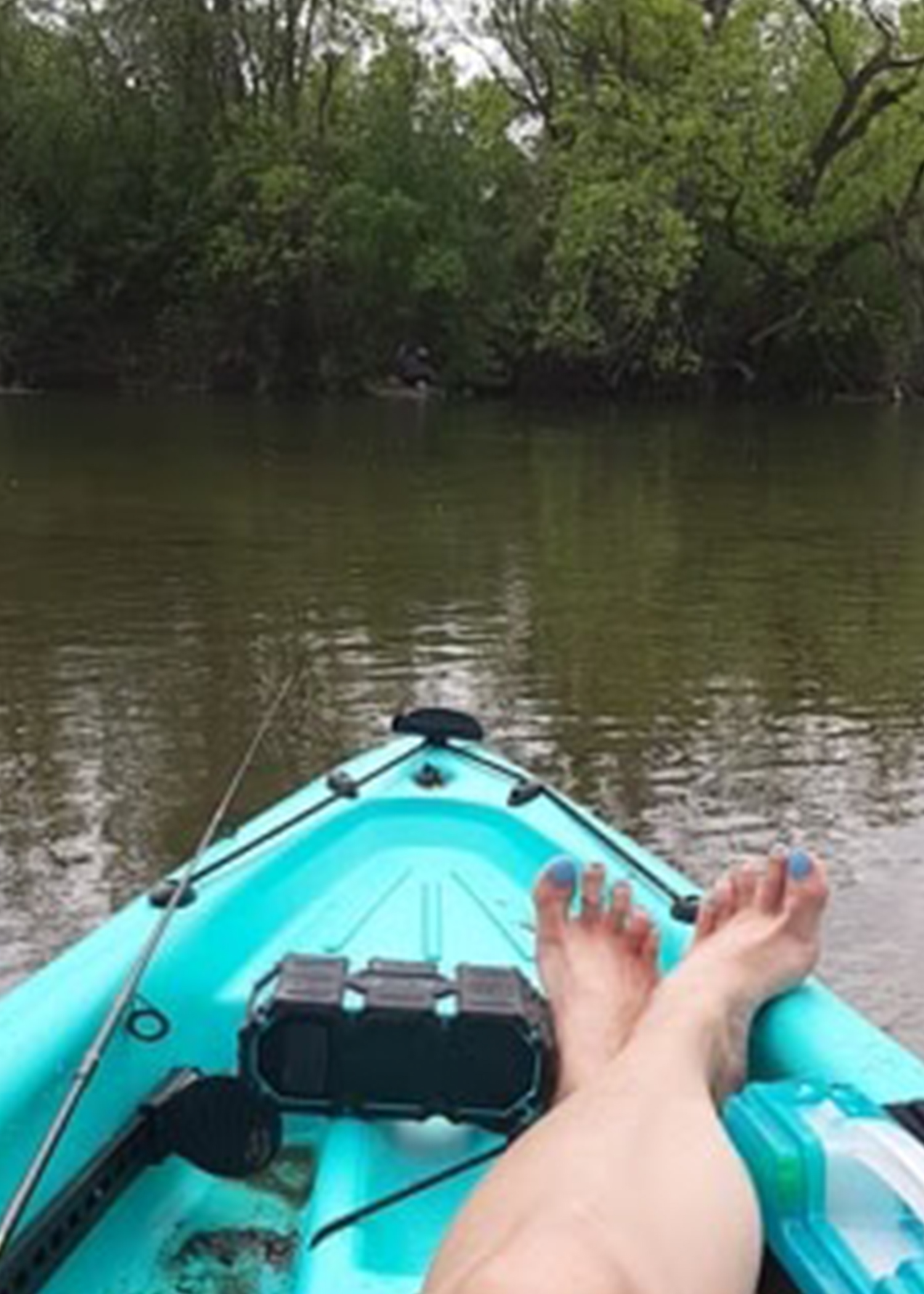
Kayaking in Washington State’s recreational wonderland
BELLINGHAM, Wash. (BVM) — The Pacific rhododendron dots the shoreline in patches of soft pale pink, with heavy droplets of midmorning dew still hanging on them. Meanwhile, whiffs of western hemlock fill the air. Reflections of sunlight glisten in melodic ripples around the curvature of the kayak’s bulkhead. It’s a beautiful day for an adventure in the Evergreen State! With forest, mountains, sea, and sand there’s much to explore. And a day (or three) in a kayak is a great place to start.
Local recreational kayaking enthusiast Timmy Herron shares some advice surrounding recreational kayaking, gemstone hunting and a bit of sportfishing – Washington style.
Timmy Herron, a Bellingham resident, arrived from Minnesota almost 15 years ago. He onced asked a friend for a living recommendation, and they said Bellingham, Wash. was the most beautiful place to live. He took that advice and made the move. Since then, the countryside has never disappointed him.
Herron’s Washington home is nestled comfortably at the foothills of Mt. Baker, about 10 minutes from Silver Lake, a favored spot for kayaking. He is thriving as the owner of CCP (Conscious Cause Productions), keeping a side hobby as a mechanic and also sportfishing salmon, trout and large-mouth bass from his kayak in the neighborhood waterways.
When BVM Sports caught up with Herron in mid-May, he had just spent the day kayaking on Lake Tyrrell. The COVID-19 pandemic hasn’t kept him off the high-elevation lakes, rivers and pristinely clean waterways of the Bellingham area. His passion for kayaking, fishing and gemstone jewelry keep him naturally “socially-distanced” and loving life amidst the pandemic.

Kayaking for well over 15 years, Herron first started in Minnesota with rented equipment, then moving to an inflatable unit that wasn’t conducive to fishing and fish hooks. Eventually, he invested in a 10-foot, gear-ready kayak. Herron has spent countless hours exploring the waterways of Washington – now as a sport fisherman and custom fine gemstone jewelry artist. Sometimes, simply looking down from his kayak reveals an exquisite agate, shimmering quartz or another precious stone that he can use in one of his many handmade pieces of art.
The beauty of the kayak is its versatility and its maneuverability. It can go places motorized boats can’t, making it a premiere choice for navigating in and out of the shallow, calm waters where gemstones may lie.
“Very often all the sand has washed away and that’s where you find bigger, like quarter to fifty cent sized pieces just laying out,” Herron said. “Sometimes you can go right over the top of them and you’ll just reach down out of your kayak and grab them in the water because it’s well, like I said before it doesn’t matter if you’re in four inches of water, you can still kayak.”
The kayak is also the perfect vehicle for sportfishing, one of Herron’s favorite activities. He prefers higher elevation lakes for several reasons, mainly the integrity of the fishing itself. There is very little pollution, and the fish are larger (due to lower overall populations), which means bigger trophies that allow him to literally “be led away by the fishes.”
“One of the biggest thrills about it is when you actually hook onto a fish it’s kind of like a natural fish finder,” Herron explained. “It will take you for a pull and it will pull your kayak around for quite a while until you get the fish into the boat. And it’s always an adventure when you’re ‘fish powered.’
“Then after you catch a few fish, you’ve got your stringer hooked up to the side of the boat. I call that my natural fish finder because the fish on the stringer tied to your boat, well where are they going to go, they’re just going to go try to hang out with the other fishes and they’re just going to pull you right over to them and once you have a few fish on the stringer with enough power to pull you down to the other fish…well you found fish!”
Since Herron primarily fishes on high-altitude, freshwater lakes, saltwater paddling hasn’t been a focus for him. The main recommendation for sea paddling is the buddy system and awareness. The ocean should be respected for its riptide currents, which have the power to wash a kayak (of any weight) out to sea.
Training courses are available and should be considered prior to any first-time trip or sea run. The Seattle area is home to various clubs focusing on different styles of the sport like The Seattle Canoe and Kayak Club or The Seattle Outrigger Club. Businesses like Moondance Sea Kayak Adventures dot the entire coastline with guided tours (usually available with equipment rentals on hand). On the open water, you’ll sit inside kayaks designed for the sea, with a closed deck.
Washington’s expert kayakers are a cut above the rest, with slalom and downriver racing as their competitive focus. Washington holds rich environments for all styles and levels in the sport. For example, Tyler Bradt currently holds the record for descent on the falls in Palouse Falls State Park, launching himself 189 feet straight down!
If whitewater rushes are your flavor, there’s a place for you in Washington — the Triad River, the White Salmon River or the Klickitat (for example). Courses and ongoing training for beginners and experienced rafters can be found throughout the state. One location, found on the White Salmon River, is Wet Planet, which offers a variety of first responder courses and various levels of certification. Not a bad idea considering that – during an average rainfall year – rapid waters can move at nearly 10,000 cubic feet per second! It gets even faster during a wetter season.
According to Herron, the exceptional thing about Washington rapids is that they’re always changing.
“It’s not like Colorado, where the rivers never change,” Herron said.
Using common sense will keep you safe, but there are some other guidelines to consider. For example, seasoned enthusiasts recommend waiting until after the spring thaw to start kayaking. According to Herron, springtime conditions are usually unfavorable and can be dangerous due to melting snow and mudslides. Once the weather warms up, though, kayaking season usually lasts from May through October.
“Mountain water can move very quickly and very fast so the water level is constantly changing depending on how much water is coming down, the temperature on the mountain, is there a lot of glacier melt, that kind of stuff,” Herron added. “So the safety levels can really change quickly.”
The dry season is another factor to consider. Sometimes, Washington’s mountainous regions experience dangerous wildfires that aid in the drying of stream and riverbeds. According to Herron, monitoring the conditions and planning are key.
Typically, anytime between mid-June and late July, the mountains can experience extreme conditions that could spark wildfires.
Sometimes, casual kayakers will see a seasoned veteran trying to break their own personal best, seen in flashes of color, jutting in and around the jagged rapid areas in a long, thin, whitewater kayak. Not designed for the faint of heart.
Other than that, “Kayaking is relatively simple, almost anyone can do it,” Herron said.

“There are challenges like rapids or waves, but that’s life!” first-time kayak owner Sara Hamberg said. “We learn to get through those challenges to meet the next.”
Hamberg, another Minnesota native and friend to Herron, loves her new kayak, which she nicknamed “Kyle-ak.” She enjoys relaxing on a leisurely float and the occasional fishing opportunity. In a world of chaos, kayaking is a healthy alternative for relieving stress.
“What draws me out is being one with nature, healing both my physical and mental health,” Hamberg said. “It gets me away from my phone.”
Whether its charting courses down from mountain lakes or navigating tides on the saltwater Washington has it all. It’s part of what makes this state (and this sport) so pragmatic here. There is realistically a place for everyone, and a kayak can take you there.






